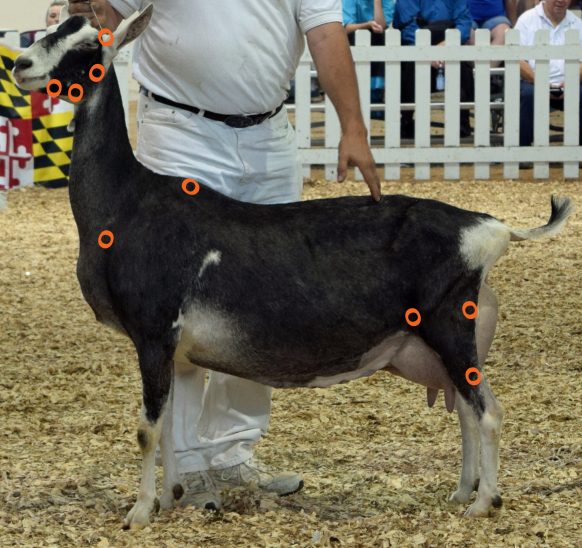CL (Caseous Lymphadenitis)
Caseous encephalitis (CL) is a bacterial disease that affects dairy goats worldwide. It is caused by the bacterium Corynebacterium pseudotuberculosis.
Symptoms:
The symptoms of CL in dairy goats can vary depending on the severity of the infection and the stage of the disease. Some of the common symptoms include:
– Swelling and abscesses around the head, neck, and shoulders
– Loss of appetite and weight loss
– Lethargy and depression
Prevention:
Prevention is the best approach to control the spread of CL in a dairy goat herd. Here are some tips to prevent the disease:
– Practice good biosecurity measures, including disinfecting equipment and facilities regularly, isolating new animals, and preventing contact with infected animals. DO NOT purchase from infected herds.
Testing Resources:
Testing for CL in dairy goats is essential to detect the disease early and prevent its spread. Here are some testing resources to consider. While the test is not 100% accurate and can return both false positives and false negatives, it is a crucial tool to maintain a healthy herd. When buying or selling goats, it is always best to perform a biosecurity panel which should include CAE/CL and Johnes at a minimum.
– Veterinary Diagnostic Laboratories: Many veterinary diagnostic laboratories offer testing services for CL in dairy goats. These labs can test the animal’s blood, tissue, or abscess fluid to detect the presence of the bacterium.
– State Departments of Agriculture: State Departments of Agriculture may offer CL testing services or provide information on labs that offer such services. Check with your local department of agriculture for more information.
Likely Locations of CL Abscesses:
Abscesses commonly appear at lymph node sites: under the ear or jaw, at the shoulder, along the flank. A goat which has previously had an abscess under the ear may often have a telltale scar. There is an internal version of the disease, more common in sheep than goats, where abscesses will not be visible but may affect internal organs.

lymph node locations where abscesses typically appear
CL is a serious bacterial disease that can affect dairy goats worldwide. It is essential to be aware of the symptoms, prevention, and testing resources to control the spread of the disease in a goat herd. By practicing good biosecurity measures and testing for CL, dairy goat owners can reduce the risk of infection and keep their animals healthy.
Preventing Spread
While CL can live in the soil or elsewhere for a period of time, the likeliest (by far) mode of transmission is through contact with exudate from the ruptured abscess of an infected animal. And while transmission is theoretically possible from one infected animal to another even without a ruptured abscess, it is not likely.
For this reason it is important to monitor and isolate any animal with a suspect abscess. The abscess progresses predictably, growing in size and becoming tighter until the hair starts to fall out of the abscessed area. At this point the abscess is about to rupture, and it is very important to prevent the thick discharge from the ruptured abscess from contaminating any other goat or any area that cannot be thoroughly disinfected. Isolate the animal in a quarantine pen or other location that can be disinfected.
For many years since there was no effective vaccine approved in the United States (there is one in Australia) goat farmers developed remedies to prevent abscesses from rupturing. One of those methods was to inject formalin directly into the abscess. Since the abscess is completely walled off inside the goat’s body, the bacteria inside the abscess would be completely destroyed (if things worked as expected) and the abscess would gradually shrink away without ever rupturing. For obvious reasons this was an unsafe and unapproved procedure.
More recently, studies have shown that injecting Draxxin (tulathromycin – an antibiobitic often used to combat respiratory infections in ruminants) into the abscess may be a promising strategy, early studies showed some degree of efficacy.
Are all abscesses CL?
Definitely not. Abscesses can be caused by other types of injuries and infection, so the appearance of an abscess even in a suspect location does not necessarily mean that a goat has CL. Goats are notorious for eating blackberries, cheat grass, other types of vegetation which may inflict an injury that causes a swelling or abscess inside the mouth, leading eventually to an abscess. The surest and most reliable test is a sample of the exudate. If you sample the contents of the abscess (by aspirating with a large gauge needle) and send them to a reliable testing lab, the results should be definitive.
More info on CL, including testing resources: